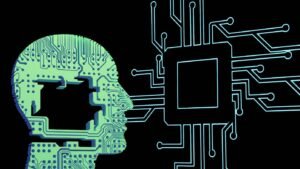AI in Production
Artificial Intelligence (AI) is revolutionizing the way businesses operate and produce goods. With advancements in machine learning algorithms and computing power, AI is now being widely deployed in production processes across various industries. From automating repetitive tasks to optimizing efficiency, AI has become a game-changer in the world of production.
Key Takeaways
- AI is transforming production processes across industries.
- Machine learning algorithms and computing power are facilitating AI deployment.
- AI improves productivity, quality control, and decision-making in production.
**AI plays a significant role in optimizing production processes**. By using machine learning algorithms, AI systems can analyze large amounts of data to identify patterns and optimize various aspects of production. *For example, AI can analyze historical production data to predict failure rates of equipment and schedule maintenance proactively, minimizing downtime and improving overall efficiency.* AI can also automate repetitive tasks, freeing up human resources for more complex and creative work. The integration of AI in production processes leads to increased productivity, improved quality control, and more informed decision-making.
**Optimizing production efficiency with predictive maintenance**. One of the significant applications of AI in production is predictive maintenance. By analyzing data from sensors and historical records, AI systems can detect patterns and anomalies to predict equipment failure and maintenance needs. This enables proactive maintenance scheduling, reducing the risk of unexpected breakdowns and improving overall equipment reliability. Additionally, AI can suggest optimized maintenance intervals based on real-time operating conditions and historical performance patterns, maximizing the equipment’s lifespan.
**Quality control and defect detection with AI**. AI can significantly improve quality control processes in production. By analyzing vast amounts of data, AI systems can identify patterns and deviations to detect defects and ensure product quality. For example, computer vision AI algorithms can analyze images of products in real-time to identify any abnormalities or defects in their shape, color, or texture. This allows for immediate intervention and adjustment, reducing the number of defective products reaching the market and enhancing customer satisfaction.
AI in Production: Data-Driven Decision Making
**Data-driven decision-making powered by AI**. In production, data holds immense value. AI systems can analyze large datasets in real-time to provide valuable insights for decision-making. By identifying patterns, trends, and correlations, AI can help production managers make informed decisions regarding process optimization, resource allocation, and product design. AI’s ability to process vast amounts of data enables businesses to make data-driven decisions swiftly and accurately, improving overall operational efficiency and profitability.
**Benefits of AI integration in supply chain management**. The adoption of AI technology in supply chain management is becoming increasingly crucial for businesses. AI-powered systems can optimize supply chain operations by predicting demand, optimizing inventory levels, and improving delivery routes. By analyzing historical data, AI can forecast demand patterns, reducing the risk of stockouts or overstock situations. Additionally, AI can analyze real-time data from sensors and IoT devices to track goods in transit and optimize delivery routes, reducing transportation costs and improving overall supply chain efficiency.
| Industry | Percentage of businesses using AI in production |
|---|---|
| Manufacturing | 60% |
| Automotive | 75% |
| Electronics | 50% |
**AI adoption rates in production sectors**. According to recent studies, AI adoption in production sectors varies across industries. In the manufacturing industry, approximately **60% of businesses** currently employ AI in their production processes. The automotive industry exhibits even higher adoption rates, with around **75% of businesses** harnessing AI’s potential. The electronics industry also shows significant AI integration, with AI adoption in around **50% of businesses**. These numbers demonstrate the growing recognition of AI’s benefits and its increasing integration into production processes.
Conclusion
In conclusion, AI is revolutionizing production by optimizing efficiency, enhancing quality control, and facilitating data-driven decision-making. With AI’s ability to analyze large datasets and predict maintenance needs, businesses experience improved productivity, reduced operational costs, and enhanced customer satisfaction. As more industries recognize the potential of AI, its integration in production processes will continue to expand, shaping the future of manufacturing and other sectors.

Common Misconceptions
Misconception 1: AI will Replace Humans Completely
AI technology has indeed advanced significantly in recent years, but the idea that it will entirely replace human workers is a common misconception. In reality, AI is designed to augment human capabilities, improve efficiency, and assist in decision-making processes. While certain tasks may be automated by AI systems, human judgment, creativity, and empathy remain essential in many industries.
- AI can help automate repetitive and mundane tasks, freeing up time for humans to focus on more complex and strategic endeavors.
- Human involvement is crucial for ethical decision-making in cases where AI may lack the ability to understand moral or social implications.
- AI can complement human creativity and innovation by generating insights and suggestions, but true innovation still requires human imagination.
Misconception 2: AI is Infallible and Always Accurate
Another common misconception is that AI systems are infallible and always provide accurate results. While AI technologies have made significant advancements, they are still prone to errors, biases, and limitations. It is crucial to acknowledge that AI systems are ultimately created and trained by humans, and as such, they may inherit human biases or encounter unforeseen circumstances.
- AI algorithms may produce biased results due to inherent biases in the data they are trained on or unintentionally introduced biases in their design.
- Certain AI technologies, such as deep learning models, may struggle to explain the underlying reasons behind their decisions, making it harder for humans to trust and understand their outputs.
- A well-designed AI system takes into account these limitations and incorporates human oversight and feedback to ensure accuracy and fairness.
Misconception 3: AI Will Take Away Jobs
There is a misconception that the deployment of AI systems in production will result in widespread job losses. While it is true that some jobs may be automated, new opportunities and roles will also emerge as AI technology progresses. The key lies in how humans can adapt and collaborate with AI systems to enhance productivity and create new value.
- AI can create new job roles and opportunities in fields such as AI development, data analysis, and machine learning engineering.
- Humans can focus on tasks that require emotional intelligence, critical thinking, and complex problem-solving, which AI currently struggles with.
- Many industries require a combination of human expertise and AI capabilities to achieve optimal results, leading to the creation of hybrid job roles.
Misconception 4: AI Will Develop Consciousness
The idea that AI will eventually develop consciousness and become self-aware is a common misconception often perpetuated by popular culture and science fiction. While AI technology continues to advance, the development of true consciousness is a complex and philosophical matter that goes beyond the realm of current AI capabilities.
- AI systems are programmed to execute tasks based on predefined rules and algorithms, lacking the ability to possess subjective thoughts, desires, or awareness of self.
- The development of generalized AI that mirrors human consciousness would require a fundamental shift in AI design and understanding of human cognition and consciousness.
- Current AI technologies are specialized and trained to excel at specific tasks, such as image recognition or natural language processing, without having a broader understanding of the world.
Misconception 5: AI is a Stand-Alone Solution
AI is often regarded as a stand-alone solution that can magically solve all problems. However, in reality, AI is just one component of a larger system and needs to be integrated and supported by various other technologies, processes, and human inputs to achieve optimal results.
- AI systems require accurate and high-quality data to deliver meaningful insights and predictions, necessitating data collection, cleaning, and validation processes.
- Human expertise is crucial for selecting and fine-tuning AI models, interpreting results, and ensuring their alignment with business objectives.
- AI should be seen as a tool that complements and enhances existing workflows, rather than a one-size-fits-all solution to all problems.

In recent years, Artificial Intelligence (AI) has revolutionized various industries by automating processes, increasing efficiency, and improving outcomes. The following table highlights how AI is making its mark across different sectors.
| Industry | AI Applications | Benefits |
|---|---|---|
| Manufacturing | Robotic Process Automation (RPA), predictive maintenance, quality control | Reduced errors, increased productivity, optimized maintenance |
| Healthcare | Medical image analysis, robot-assisted surgeries, predictive analytics | Improved diagnosis, precise surgeries, proactive patient care |
| Finance | Fraud detection, algorithmic trading, customer service chatbots | Enhanced security, efficient trading, personalized customer support |
| Retail | Inventory management, demand forecasting, personalized recommendations | Optimized stock levels, accurate predictions, increased customer engagement |
| Transportation | Autonomous vehicles, route optimization, supply chain management | Safer transportation, reduced costs, streamlined logistics |
Artificial intelligence, when integrated into these industries, has the potential to revolutionize the way tasks are accomplished. From manufacturing to healthcare, there is a trend of embracing AI-driven automation to optimize processes and enhance productivity.
Title: AI Impact on Job Market
While AI and automation offer numerous benefits, there are concerns regarding the impact on the job market. The table below presents a breakdown of the potential effects of AI adoption on different occupations.
| Occupation | Potential Impact |
|---|---|
| Repetitive Manual Labor | Reduction in workforce as AI takes over mundane and repetitive tasks |
| Customer Service | Transition towards AI-powered chatbots and virtual assistants, impacting job demand |
| Data Entry | Automation of data entry tasks may lead to a decrease in data entry jobs |
| Professional Services | Increased efficiency and accuracy but potential job displacement in certain areas |
| Creative Industries | Minimal direct impact, with AI tools assisting and augmenting creative processes |
As AI becomes more advanced and integrated across industries, it is critical to anticipate the potential consequences on the job market and implement strategies to mitigate any negative impacts.
Title: AI Algorithms in Popular Applications
AI algorithms underlie the functionality of many popular applications we use on a daily basis. Take a look at the table below to gain insights into the AI algorithms powering some of our favorite tools.
| Application | AI Algorithms |
|---|---|
| Virtual Personal Assistants | Natural Language Processing (NLP), Machine Learning |
| Image Recognition | Convolutional Neural Networks (CNN) |
| Recommendation Systems | Collaborative Filtering, Content-Based Filtering |
| Speech Recognition | Hidden Markov Models (HMM), Deep Neural Networks (DNN) |
| Fraud Detection | Supervised Learning, Anomaly Detection |
AI algorithms are at the core of sophisticated applications that have become an integral part of our daily lives. By understanding the algorithms behind these tools, we can appreciate the complexity and potential of AI technology.
Title: AI in Education
The educational sector is not immune to the transformative power of AI. The table below showcases how AI is being utilized to enhance the learning experience and improve educational outcomes.
| Application | AI Usage | Benefits |
|---|---|---|
| Adaptive Learning Platforms | Personalized instructions, tailored content, and real-time feedback | Improved engagement, individualized learning, better performance |
| Automated Grading | Efficient evaluation, standardized grading, timely feedback | Reduced workload, fair evaluation, faster assessment |
| Curriculum Planning | Data-driven insights, personalized curriculum, targeted interventions | Optimized learning paths, improved curriculum design, enhanced student progress |
| Virtual Reality (VR) | Immersive learning experiences, virtual simulations, enhanced comprehension | Increase in practical knowledge, improved understanding |
| Natural Language Processing (NLP) for Language Learning | Language analysis, automated language exercises, pronunciation feedback | Enhanced language skills, better pronunciation, individualized learning |
By harnessing the potential of AI, education institutions are transforming traditional learning methods into dynamic and personalized experiences, catering to the unique needs of each student.
Title: AI in Customer Service
AI has significantly impacted customer service by providing efficient and personalized experiences. The table below demonstrates how AI technologies are revolutionizing customer service across various industries.
| Industry | AI Applications | Benefits |
|---|---|---|
| E-commerce | Virtual assistants, chatbots, recommendation engines | 24/7 support, personalized recommendations, increased customer satisfaction |
| Telecommunications | Intelligent call routing, customer sentiment analysis | Reduced wait times, improved issue resolution, enhanced customer engagement |
| Banking | AI-powered chatbots, fraud detection, personalized financial advice | Efficient customer interactions, enhanced security, tailored recommendations |
| Travel and Hospitality | Virtual assistants, AI-driven recommendations, intelligent booking | Enhanced travel planning, personalized experiences, streamlined bookings |
| Healthcare | AI chatbots, appointment scheduling, symptom analysis | 24/7 healthcare support, efficient appointment management, symptom evaluation |
The integration of AI technologies in customer service has resulted in more responsive, personalized, and efficient interactions, enhancing customer satisfaction and loyalty.
Title: AI Ethics and Bias Considerations
While AI offers immense benefits, ethical considerations and biases associated with AI systems must be acknowledged. The table below highlights key ethical issues and biases present in AI applications.
| Ethical Issues | Biases |
|---|---|
| Data Privacy | Gender Bias |
| Transparency | Racial Bias |
| Fairness | Socioeconomic Bias |
| Accountability | Age Bias |
| Robotic Ethics | Cultural Bias |
Responsible development and deployment of AI systems require addressing ethical concerns and actively working to mitigate biases. It is crucial to ensure fairness, transparency, and accountability in all facets of AI implementation.
Title: AI-Enhanced Cybersecurity
As cybersecurity threats continue to evolve, AI is playing a vital role in fortifying defense mechanisms. The table below highlights how AI is utilized in cybersecurity to detect and prevent malicious activities.
| AI Application | Function | Benefits |
|---|---|---|
| Advanced Threat Detection | Analyzing vast amounts of data to identify patterns and anomalies | Early threat detection, reduced false positives, enhanced security |
| Automated Security Operations | Automating routine security tasks and incident response | Efficient incident management, faster response times |
| User Behavior Analytics | Monitoring user activities to identify anomalies and insider threats | Timely threat identification, proactive risk management |
| Vulnerability Assessments | Scanning systems and networks for potential vulnerabilities | Improved system hardening, proactive vulnerability management |
| Machine Learning in Malware Detection | Analyzing known malware patterns and identifying unknown threats | Enhanced malware detection, immediate response |
By leveraging AI in cybersecurity, organizations can better protect against emerging threats, detect vulnerabilities, and respond effectively, minimizing potential damages.
Title: AI Applications in Agriculture
AI technologies have found their way into the agricultural sector, bringing advancements to improve crop outcomes and farming practices. The following table outlines some AI applications relevant in the world of agriculture.
| AI Application | Function | Benefits |
|---|---|---|
| Precision Agriculture | Real-time monitoring, automated irrigation, crop yield prediction | Optimized resource usage, increased crop productivity, reduced waste |
| Pest and Disease Detection | Monitoring and identifying crop diseases and pests through image analysis | Early pest/disease detection, targeted treatment, reduced crop loss |
| Automated Harvesting | Autonomous robots for efficient and accurate crop harvesting | Increased harvesting efficiency, reduced labor costs, minimized harvest losses |
| Soil Analysis | AI-driven soil sensors for assessing soil quality and nutrient levels | Optimized fertilization, improved crop health, increased yield |
| Crop Monitoring | Utilizing drones and satellite imagery to monitor crop growth and health | Early identification of growth abnormalities, targeted interventions |
The integration of AI technologies in agriculture holds promise for ensuring optimal crop growth, reducing environmental impact, and securing global food production.
Title: AI in Energy Management
AI plays a pivotal role in optimizing energy consumption, reducing waste, and improving overall energy management. The table below showcases AI applications in energy management across various sectors.
| Sector | AI Applications | Benefits |
|---|---|---|
| Smart Grids | Prediction of energy demand, intelligent load balancing, outage detection | Efficient energy distribution, reduced costs, enhanced reliability |
| Building Automation | Smart sensors, occupancy detection, HVAC optimization | Energy-efficient buildings, reduced energy consumption, cost savings |
| Renewable Energy | Prediction models, planning and optimization of renewable energy sources | Optimized renewable energy utilization, improved grid stability |
| Industrial Automation | Process optimization, predictive maintenance, energy consumption analysis | Enhanced operational efficiency, reduced downtime, energy savings |
| Transportation | Route optimization, predictive maintenance for vehicles, smart charging | Reduced energy waste, increased vehicle efficiency, reduced carbon footprint |
By harnessing AI in energy management, organizations and individuals can make significant strides towards sustainable practices and reduce their carbon footprint.
In conclusion, the proliferation of AI technologies across industries has led to unprecedented advancements in automation, efficiency, and decision-making. From revolutionizing job markets to enhancing customer experiences, AI’s wide-ranging applications are reshaping the future of various sectors. However, it is crucial to actively address ethical concerns, biases, and ensure responsible development and deployment. As AI continues to evolve, embracing its potential while maintaining an ethical framework will be essential for reaping its maximum benefits.
AI in Production – Frequently Asked Questions
1. How does AI impact production processes?
AI can significantly impact production processes by automating repetitive tasks, optimizing workflows, predicting maintenance needs, and improving overall efficiency.
2. What are some common applications of AI in production?
Common applications of AI in production include quality control, demand forecasting, inventory management, predictive maintenance, and production optimization.
3. How can AI improve quality control in production?
AI can improve quality control in production by analyzing data from sensors, cameras, and other sources to detect defects, identify patterns, and prevent product failures.
4. What is predictive maintenance in the context of AI in production?
Predictive maintenance refers to using AI algorithms to analyze sensor data and historical patterns to predict and prevent equipment failures or breakdowns before they occur.
5. How can AI optimize production workflows?
AI can optimize production workflows by analyzing data on production lines, identifying bottlenecks, suggesting process improvements, and assisting in resource allocation.
6. What challenges are associated with implementing AI in production?
Challenges associated with implementing AI in production include data quality and availability, integration with existing systems, skill gaps, and ensuring the reliability and security of AI algorithms.
7. Can AI be used to improve energy efficiency in production?
Yes, AI can be utilized to improve energy efficiency in production by optimizing resource consumption, identifying energy waste, and suggesting energy-saving strategies.
8. Are there any ethical considerations with AI in production?
Yes, ethical considerations include ensuring transparency and fairness in AI decision-making, protecting workers’ privacy, and addressing the potential impact of AI on job displacement.
9. How can AI assist in demand forecasting for production?
AI can assist in demand forecasting for production by analyzing historical sales data, market trends, and external factors to predict future demand accurately, enabling better production planning.
10. How can companies get started with implementing AI in production?
Companies can start implementing AI in production by identifying specific areas for improvement, conducting a feasibility study, acquiring the necessary AI tools or expertise, and gradually piloting and scaling up AI solutions.




